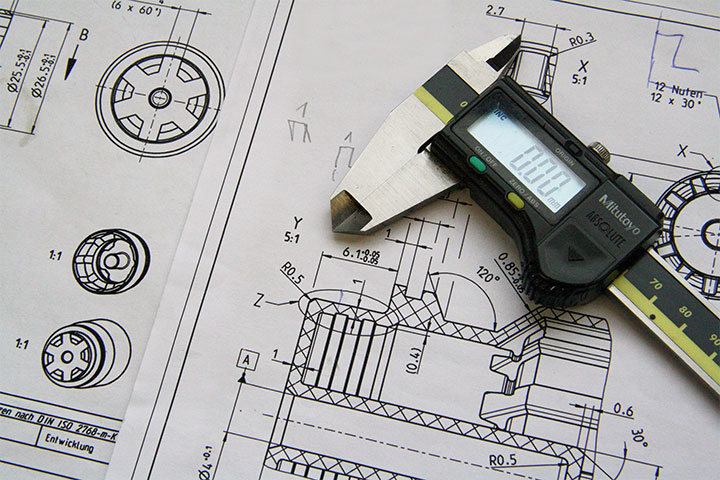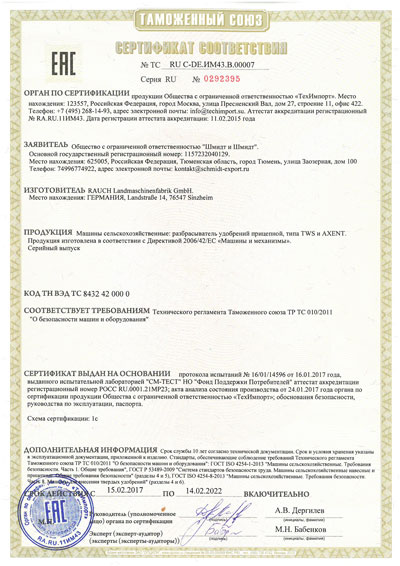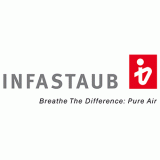The EAC Declaration of Conformity to Technical Regulations of the Eurasian Economic Union is evidence that the products meet the minimum requirements of the Technical Regulation of the Eurasian Economic Union (EAEU), former Eurasian Custom Union (EACU). This ensures that products are safe both for consumers and the environment.
The declaration must be registered in the uniform register of the Eurasian Economic Union by a national producer or an . A declaration registered in the Eurasian Economic Union is valid in the whole Economic Union. According to the Decision of the Ministery for economic development in Russia of July 31st, 2020 n. 478, since Jannuary 1st, 2021 the accredited certification bodies are no longer authorized to register EAC declarations in the unified register of the Eurasian Economic Union.
The existence of an EAC declaration registered in the unified register of the EAEU is a prerequisite for placing products on the market in Russia, Belarus, Kyrgyzstan, Kazakhstan and Armenia.
Legal framework for EAC Declaration
The legal basis for the EAC declaration involves following agreements:
- the board decision of the EAEU commission No. 319 from 18.06.2010
- the agreement on common principles and rules of Technical Regulation in the Republic of Belarus, Republic of Kazakhstan and the Russian Federation 18.11.2010
- the decision of the board of the Customs Union Commission No. 620 from 07.04.2011
As a consequence of the coordination of national safety standards, the previous national Technical Regulations such as Russian GOST and TR certification were gradually phased out and substituted by the new Technical Regulations of the EAEU (TR CU or TR EAEU) in every industrial sector. The new EAC certification and EAC declaration were introduced in the EAEU as a simpler and more cost-effective form of proof of conformity.
Application area
The EAC certification and EAC declaration are required for all products, which are listed in the common list of products to be certified within the EAEU under the board decision of the EAEU No. 620 from 07.04.2011 .
Technical Regulations TR CU and TR EAEU
So far, 48 technical regulations have been adopted in the Eurasian Economic Union, which must be used for EAC declaration. Several sets of rules are currently being developed or are already being discussed at the Union level.
The technical regulations TR CU and TR EAEU are basically the counterpart of Eureopean CE directives, or more precisely EU regulations. TR CU is abbreviation of Customs UnionTechnical Regulations an TR EAEU is an abbreviation of Economic Union Technical Regulations, smiliar to the designation of CE directives e.g. Directives 2006/42/EC and 2011/65/EU. More on this topic you can find in our articles: "Which one is correct: TR CU certificate or EAC certificate?" and "Differences between EAC Certificate and EAC declaration".
The technical regulations set minimum requirements for the safety of the respective products. The conformity of the products with the regulations is declared by EAC declaration by the manufacturer or its representative. After successful conformity assessment, the products are marked with the EAC conformity mark. The EAC marking declares that the product complies with the applicable safety requirements of the technical regulations. Only then the product can be placed on the EAEU market for free circulation.
The procedure of EAC conformity assessment
An EAC declaration is made by the producer, importer or power of attorney and entered into the uniform register on request of the applicant to the accredited certifying body.
Depending on the purpose of the EAC declaration, different schemes can be applied: for serial production or for single-supply.
Batch (intended for batch delivery): all of the specified quantity of manufactured units with the same name and designation as indicated in the Certificate of Conformity and intended for sale.
Product Unit: A single piece or quantity of product.
These and other definitions related to EAC Conformity Assessment are available in GOST 31894-2012 Terms and definitions in the field of conformity assessment (confirmation).
According to the certification process, the EAC declarations are valid for up to 5 years.
An EAC declaration may only be applied for by a company established in the territory of the EAEU. Therefore an authorized representative within the EAEU is required. If you need an authorized representative, we will be pleased to offer you a suitable company that takes over this function.
As a proof of conformity with the requirements of the EAEU when registering a EAC declaration, audit reports as well as test reports from a notified body may be required.
The EAC declaration process is usually comprised of the following steps:
- Step: Define under which technical rules the product falls.
- Step: Select the scheme the conformity assessment process is to follow.
- Step: Perform tests and record results properly.
- Step: If the results are positive, prepare the necessary documents. These are listed in the corresponding Technical Regulations.
- Step: The declaration is issued.
- Step: The declaration and the documents must be entered in the unified register of the Eurasian Economic Union
Schemes of conformity assessment
All technical regulations contain detailed descriptions of the EAC declaration, the so called schemes. The selection of the scheme depends on the characteristics of the product, the production process and the delivery. The schemes of conformity assessment can be considered the counterpart of the conformity assessment modules according to the UE-directive 768/2008/EG in the Eurasian Economic Union.
Possible schemes of the EAC declaration are explained below:
| scheme | Product examination | Manufacturing audit | Manufacturing control | Scope of application | Certificate of conformity |
|---|---|---|---|---|---|
| 1D | Examination of the product sample by the producer | - | Manufacturing control by the producer | For series production; applicant, domestic/foreign producer, if there is an authorized representative of the EAEU | EAC declaration for serial production |
| 2D | Examination of the contract-bound delivery in batches or single-unit production by the applicant | - | - | For contract-bound delivery in batches or single-unit production production; applicant; domestic/foreign producer, seller (supplier), if there is an authorized representative of the EAEU | EAC declaration for contract-bound delivery in batches or single-unit production |
| 3D | Examination of the product sample in an accredited testing laboratory | - | Manufacturing control by the producer | For serial production; applicant; domestic/foreign manufacturer, if there is an authorized representative of the EAEU | EAC declaration for serial production |
| 4D | Examination of the contract-bound delivery in batches or single-unit production production by the applicant in an accredited testing laboratory | - | - | For contract-bound delivery in batches or single-unit production; applicant; domestic/foreign producer, if there is an authorized representative of the EAEU | EAC declaration for contract-bound delivery in batches or single-unit production |
| 5D | Examination of the product sample | - | Manufacturing control by the producer | For series production; applicant; domestic/foreign producer, if there is an authorized representative of the EAEU | EAC declaration for products, which are used in production facilities with higher risk exposure or for innovative products for whom no guidelines exist |
| 6D | Examination of the product sample in an accredited testing laboratory | Certification of the quality system | Manufacturing control by the manufacturer | as at 5D | EAC declaration for series production |
Required documents for obtaining the EAC Declaration

- product description
- detailed product information
- customs tariff number
- technical drawings
- technical data sheet
- technical passport
- operating manuals
- test reports
- GLN - Global Location Number
- GTIN-Code - Global Trade Item Number
- existing certificates: ISO, DIN, CE, CB
EAC declaration contains the following information:
- address and name of the manufacturer
- list of declared products
- customs tariff number
- applied standards of the Technical Regulation
- data on the test center
- period of validity
- registration number
- data on the notified body
EAC certification
In addition to the EAC declaration, the EAC Certification also exists as another form of official proof that the products comply with the national Technical Regulations of the participating countries.
The EAC certificate and the EAC declaration have the same validity. The products listed in the board decision of the EAEU No. 620 from 07.04.2011 require a EAC certification or a EAC declaration.
Differences between an EAC Certificate and an EAC Declaration
| Criteria | EAC Certificate | EAC Declaration |
|---|---|---|
| Applicant | producer, importer, person with power of attorney | producer, importer, person with power of attorney |
| Classification of products | made by the certifying body | made by the applicant |
| Proof of conformity | based on the test report of the accredited test laboratory | based on applicant's own evidence or the test report of the accredited test laboratory |
| Quality assurance | comprehensive production audit through the certifying body or external ISO 9001 certification | quality assurance is done by the applicant |
| Issuing of the certificate of conformity | certification body on an official form | applicant on a normal sheet of paper |
| Registration of the certificate of conformity | certification body | applicant or certification body |
| Validity | 1 to 5 years, depending on the regulation | 1 to 5 years, depending on the regulation |
| Responsibility | lies with the certification body | lies with the applicant |
| Surveillance | certification body | - |
Obligatory product marking

Products for which a EAC declaration has been issued and registered need to be marked with the Eurasian Conformity Mark in accordance with the decision of the board of the Customs Union Commission No. 711 from 15.07.2011. This proves its conformity to all legal requirements of the EAEU. The placing on the market of products without an appropriate EAC marking can be punished with a fine and confiscation.
We recommend taking the EAC declaration of goods seriously, in order to avoid possible negative consequences.
Optional certification
If your products are not subject to compliance with EAC standards and you need a confirmation of the safety and high quality of your products, we can offer you a GOST Certification for the Russian and Kazakh market.
Authorized representative for EAC Declaration
A manufacturer that does not have its registered office in one of the member states of the Eurasian Economic Union (EAEU) is not entitled to independently carry out EAC declaration for its products or register it with the competent authorities.
To perform and register an EAC declaration, a foreign manufacturer must appoint an authorized representative in one of the member states of the Eurasian Economic Union. This authorized representative acts on behalf of the manufacturer and handles the registration of the EAC declaration with the competent authority. Furthermore, the representative protects the manufacturer’s interests throughout the entire conformity assessment process, ensuring product safety, quality, and compliance with the technical regulations of the EAEU.
According to current legislation, only an operator based within the territory of the Eurasian Economic Union may be designated as an authorized representative. For European, American, or Asian producers, this is a mandatory prerequisite for declaration and market access to the EAEU.
Schmidt & Schmidt assists producers from Europe, America, and Asia in designating an authorized representative within the EAEU. Through our legally compliant solution via Kazakhstan — an EAEU Member State — we ensure the issuance of EAC declaration. With our local offices, we guarantee that the entire conformity assessment process not only complies with the technical regulations of the Eurasian Economic Union but is also conducted in accordance with European and American sanctions regulations. In this way, our clients gain reliable and lawful access to the EAEU market.
Compliance with EU and US sanctions in the context of EAC Declaration

In addition to the technical regulations of the Eurasian Economic Union (EAEU), European and international companies must also comply with the applicable sanctions of the European Union and the United States when carrying out EAC declaration. These regulations particularly concern the export of certain goods, trade with listed individuals and entities, and the provision of technical services. Non-compliance may not only jeopardize business relationships but also entail civil and criminal liability.
The situation is especially critical for exports to Russia and Belarus. Due to the geopolitical situation, numerous embargoes and restrictive measures have been imposed since 2014, which can directly affect the conformity assessment process. For example, it is possible that conformity assessment bodies or business partners in the affected countries are listed on sanctions lists, making cooperation legally impermissible. Therefore, companies must carefully review not only the technical regulations but also the current EU and US sanctions lists.
Another risk arises if a shipment is blocked due to sanctions violations. Even a formally correct conformity assessment does not provide legal certainty in such cases. Therefore, close coordination between compliance departments, export control officers, and certification partners is essential to avoid legal conflicts and to secure the supply chains.
Companies that aim to successfully export their objects of conformity assessment (products) to Kazakhstan, Russia, or other EAEU Member States should not focus solely on compliance with technical regulations but also ensure comprehensive sanctions compliance. This includes reviewing the end-use of products and selecting appropriate authorized representatives and local partners.
Schmidt & Schmidt provides a legally compliant solution via Kazakhstan. As a member state of the EAEU, Kazakhstan is authorized to issue EAC declarations. Through our local offices, we ensure that all processes related to EAC declaration are carried out in full compliance with European and U.S. sanctions regulations while still providing our clients with access to the EAEU market.
Detailed information on current developments can be found in our article: EAC Certification Amid EU and US Sanctions against Russia and Belarus.
Period of validity of EAC declaration
The validity period of the EAC declaration differs depending on the applied technical regulations, the selected scheme, the type of production (serial production, individual delivery, etc.) and equipment and ranges on average from one to 5 years. Those parameters are determined in the respective technical regulation.
Duration and costs for EAC declaration
The duration and costs associated with an EAC declaration application depend on several different factors, such as the classification of the product, any required laboratory checks and the complexity of all examinations. As such the exact conditions of the EAC declaration are always determined individually based on the required documentation.
Please note that an application for an EAC declaration can take several weeks to process.
Delivery of the documentation
If you order the EAC declaration, you will receive a copy of it via email immediately after our successful certification procedure. The original document and two certified copies will be sent by post.






















































